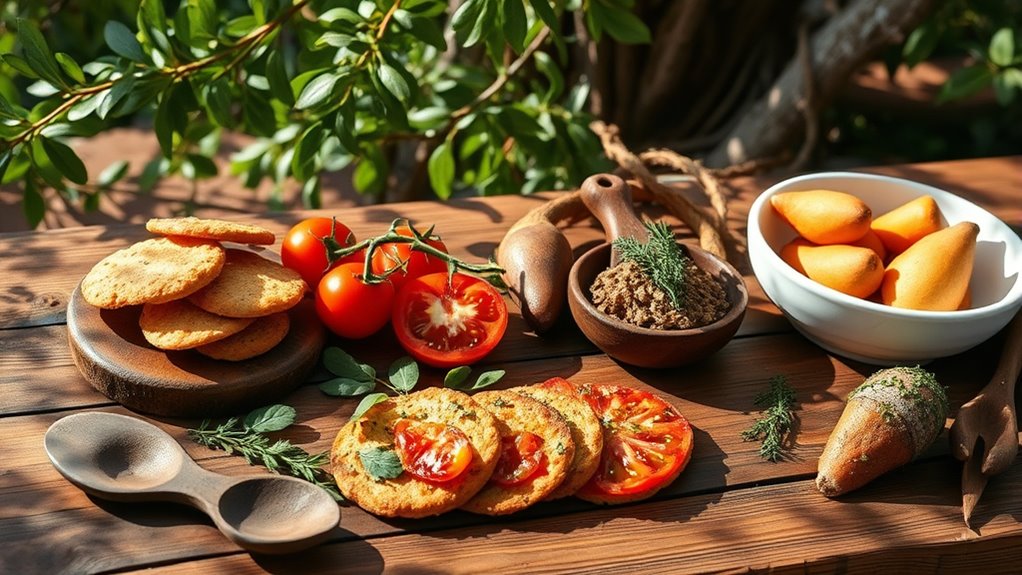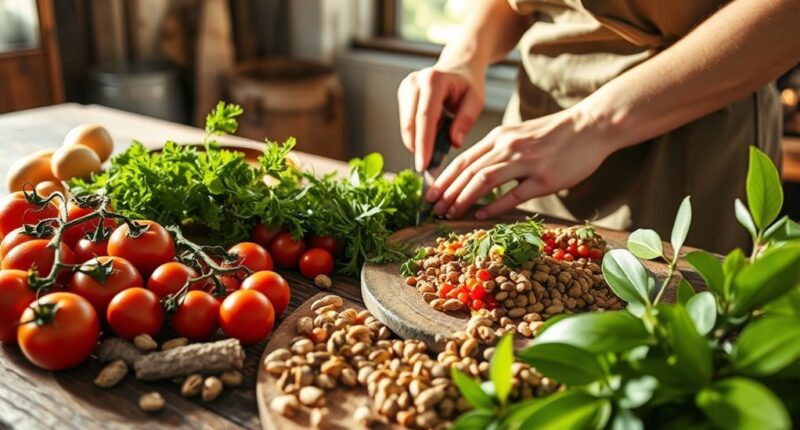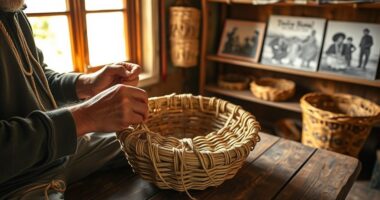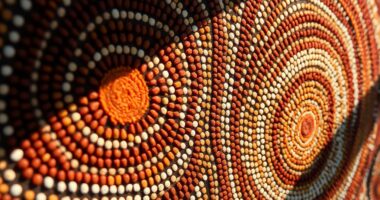To cook with bush tucker at home, focus on sustainable harvesting of native ingredients like wattleseed, native herbs, or wild fruits. Respect traditional methods like roasting, boiling, or pounding ingredients for authentic flavors. Keep dishes simple to highlight the natural qualities of each ingredient, and embrace Indigenous techniques that preserve nutrients and enhance taste. Exploring these practices will deepen your culinary experience and connect you with Australia’s rich indigenous heritage—if you keep exploring, you’ll discover more ways to bring bush tucker into your kitchen.
Key Takeaways
- Use traditional methods like roasting, boiling, and pounding to prepare native ingredients authentically.
- Incorporate native ingredients such as wattleseed, bush tomatoes, or finger lime to enhance flavor.
- Respect Indigenous traditions by sourcing ingredients sustainably and consulting cultural guides.
- Keep recipes simple to highlight the natural flavors of bush foods and preserve their cultural significance.
- Experiment with preserving techniques like drying or smoking native ingredients for versatile cooking options.

Bush tucker recipes offer a unique taste of Australia’s wild landscape, showcasing ingredients that have sustained Indigenous communities for thousands of years. If you’re eager to explore these native ingredients, understanding foraging techniques is essential. You’ll want to learn how to identify edible plants, fruits, and nuts safely in the wild. This involves observing the environment carefully, noting the shape, color, and smell of potential foods, and avoiding anything that looks unfamiliar or suspicious. When foraging, it’s crucial to harvest responsibly—only taking what you need and ensuring the plant population remains healthy for future foragers. Respect for the land and local traditions is key, so consider consulting Indigenous guides or resources to deepen your knowledge and ensure ethical harvesting.
Once you’ve gathered your ingredients, the next step involves mastering traditional cooking methods. Indigenous Australians have used simple yet effective techniques that enhance flavors and preserve nutrients. One common method is roasting, often done over an open fire or hot stones, which imparts a smoky flavor to ingredients like bush tomatoes, wattleseed, or yams. Boiling is another traditional approach, especially for tougher roots and tubers, softening them and making them easier to eat. Sometimes, ingredients are mashed or pounded using a stone tool, creating a paste that can be mixed with other flavors or eaten directly. Drying and smoking are also traditional preservation methods that allow you to enjoy bush foods long after harvest. These techniques are straightforward but require patience and attention to temperature to avoid burning or spoilage. Incorporating traditional cooking methods can elevate your dishes and deepen your appreciation for Indigenous culinary practices.
Incorporating these foraging techniques and traditional cooking methods into your kitchen transforms your approach to cooking. Instead of relying solely on supermarket ingredients, you reconnect with the land and its history. When preparing bush tucker, remember to keep it simple—highlight the natural flavors of native ingredients. For example, roasting wattleseed and grinding it into flour offers a unique nutty flavor ideal for baking or thickening stews. Cooking bush foods using traditional methods preserves their authenticity and depth of flavor, giving you a sense of connection to the Indigenous heritage behind each dish. With respect, curiosity, and care, you can bring these ancient ingredients into your home kitchen, creating dishes that honor Australia’s rich cultural landscape while delighting your palate.
Frequently Asked Questions
Are Bush Tucker Ingredients Safe for All Dietary Restrictions?
Bush tucker ingredients aren’t always safe for all dietary restrictions due to allergenic concerns. Some native ingredients may cause allergic reactions or contain gluten, so you should check labels or consult with a healthcare professional. However, many bush tucker options are naturally gluten-free and can be adapted to fit various diets. Always verify ingredient safety before incorporating them into your meals, especially if you have allergies or sensitivities.
Where Can I Buy Authentic Bush Tucker Ingredients Locally?
You might think authentic bush tucker ingredients are hiding in plain sight, but surprisingly, your best bets are local markets and specialty stores. These spots often carry native ingredients, especially in regions with indigenous communities. Don’t overlook farmers’ markets or health food stores, where you might stumble upon unique, native products. If you’re lucky, some specialty stores even offer online orders, making it easier to find those authentic bush tucker ingredients you seek.
How Do I Store Bush Tucker Ingredients to Maximize Freshness?
To maximize freshness, you should store bush tucker ingredients properly. Keep dried herbs and powders in airtight containers in a cool, dark place to preserve their flavor and potency. Fresh fruits, roots, or vegetables should be refrigerated in breathable containers or wrapped in paper towels to prevent moisture buildup. For longer storage, consider freezing certain items in airtight bags. Proper storage guarantees freshness preservation and maintains the quality of your native ingredients.
Can Bush Tucker Recipes Be Adapted for Vegan Diets?
Absolutely, you can adapt bush tucker recipes for vegan diets—think of it as turning a traditional melody into a vibrant new tune. You’ll need vegan ingredient substitutions like plant-based proteins and dairy alternatives. Use plant-based cooking techniques to enhance flavors without animal products. By creatively replacing ingredients, you’ll preserve the authentic essence of bush tucker while making it fully vegan-friendly, allowing everyone to enjoy these native flavors.
What Are the Traditional Cultural Significances of Bush Tucker Foods?
You should know that bush tucker foods hold deep cultural significance through Indigenous storytelling and cultural ceremonies. These foods connect you to the land, ancestors, and traditions, often playing a central role in rituals and celebrations. Consuming bush tucker honors Indigenous heritage, preserves ancient practices, and keeps cultural knowledge alive. By respecting these foods’ importance, you help maintain an essential part of Indigenous identity and cultural expression.
Conclusion
Now that you’ve explored these bush tucker recipes, imagine the surprises waiting in your own kitchen. With each native ingredient, you’re not just cooking—you’re uncovering ancient flavors and stories. Will you dare to experiment further, blending tradition with your own twist? The true adventure begins when you take that first bite. So, are you ready to reveal the secrets of the land’s wild bounty and create something truly extraordinary? The journey is just beginning.
Mary is a passionate writer who brings creativity and a fresh perspective to our team. Her words have the power to captivate and inspire, making her an essential contributor to our content. Mary’s commitment to storytelling and dedication to promoting Indigenous culture ensures that her work touches the hearts of our readers. We’re fortunate to have her as part of our team.










